Florida’s coral reefs are disintegrating far more quickly than previously thought, with warming, acidifying oceans causing a “wasting away” of the coral structures that support an abundance of marine life, new research has found.
Scientists had previously thought that Florida’s reef, the only barrier reef in the continental US, wouldn’t start to break up until around 2050. But recent analysis shows that this process is already under way in parts of the reef system, driven by accelerating climate change.
“We don’t have as much time as we previously thought,” said Chris Langdon, a professor at the University of Miami and a senior author of the study. “The reefs are beginning to dissolve away.”
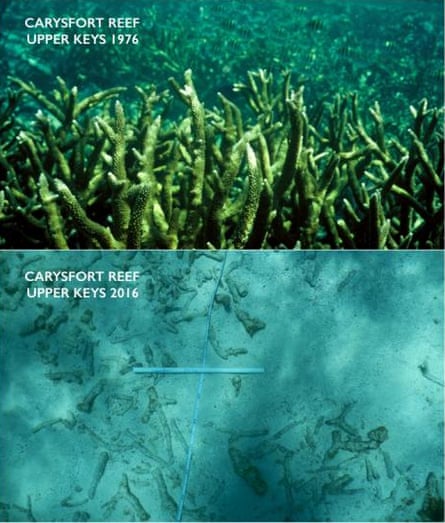
Langdon’s team spent two years surveying a 200km (124-mile) tract of Florida’s reef, stretching from Biscayne national park to the Florida Keys. The scientists found that the upper Florida Keys are in significant decline, well ahead of the expected “tipping point” where the warming oceans severely curtail coral development.
As human activity pumps out greenhouse gases, the Earth’s oceans have acted as a sort of sponge, sucking up huge quantities of carbon dioxide. This extra heat has caused the oceans to warm and expand, causing the sea level to rise, fueled by the melting of polar ice.
The excess carbon dioxide has also caused the oceans to become more than 30% more acidic over the past century. This hinders the ability of corals to form their limestone structures, as well shellfish and mollusks to form their shells. Fish behavior has also been altered by the saturation of CO2, studies have found.
Normally, Florida’s coral limestone grows in the spring and summer months, aided by favorable water temperature, light and seagrass growth conditions. In winter, this process slows or even reverses as seagrasses decay and the light wanes.
The University of Miami study, published in Global Biogeochemical Cycles, found that falling ocean pH, caused by acidification, is overwhelming the spring and summer growth of corals, meaning that the Florida reefs are being pushed into structural decline.
“The reefs are wasting away,” Langdon said. “Each year, the reefs are going to lose some of their structure. This is one more reason why we need to get serious about reducing carbon dioxide emission sooner rather than later.”
Florida’s reef is home to 100 coral species and more than 400 fish species, making it one of the most important reef systems in the world. It faces a number of pressures, however, with dredging of the seabed for port expansion causing corals to be smothered by silt. The grandson of famed ocean explorer Jacques Cousteau recently warned that plans to expand a port at Fort Lauderdale were “lunacy” due to the impact upon the corals.
Globally, coral reefs are undergoing a widespread bleaching event, driven by the El Niño phenomenon and climate change. Australia’s Great Barrier Reef has experienced widespread bleaching, which is where prolonged high temperatures cause the coral to expel the symbiotic algae living in their tissues, causing them to whiten. This can lead to the coral completely dying off.
Although coral reefs are found in less than 1% of the surface area of the world’s oceans, they support a riot of biodiversity, with 25% of the Earth’s marine creatures relying upon them for food and shelter.
Corals are creatures that take root on the ocean floor, using their tiny, tentacle-like arms to capture food from the water. Coral polyps secrete a hard outer skeleton of limestone that attaches to rocks or other polyps, helping form reef structures.
The loss of coral reefs would have devastating consequences throughout the aquatic food chain and impact the 500 million people around the world who rely upon them for food and income.
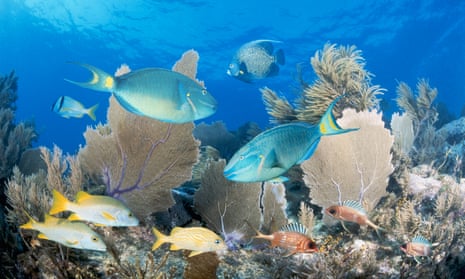
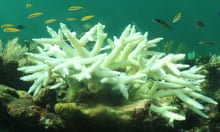





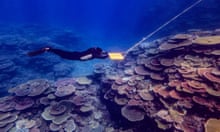
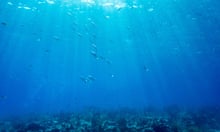

Comments (…)
Sign in or create your Guardian account to join the discussion